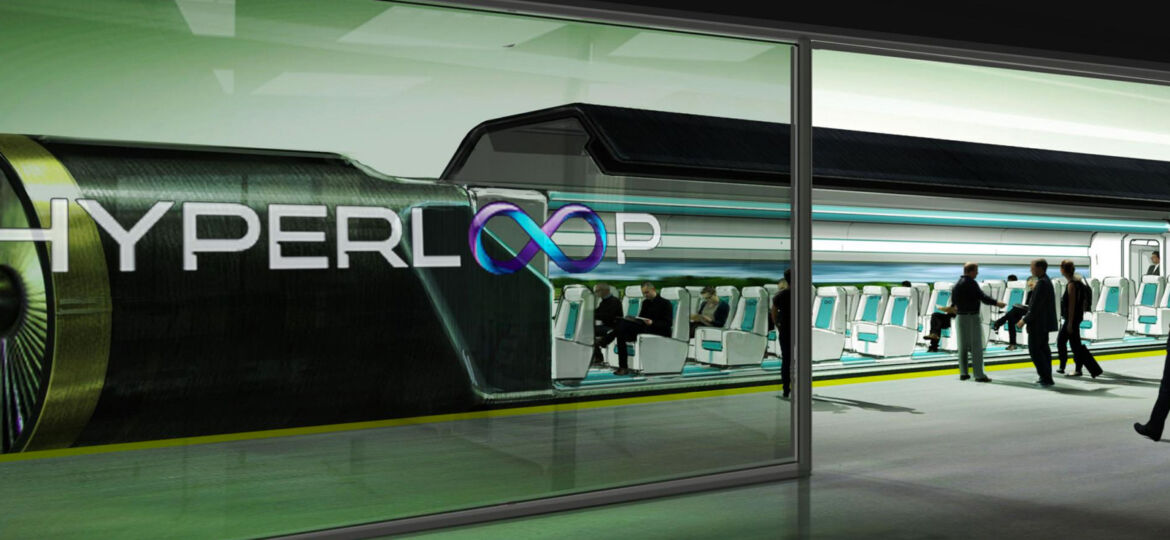
WHY THIS MATTERS IN BRIEF
What doesn’t sound fun about being sealed in a tube travelling at Mach 1.0!?
Just under a year ago PayPal, Solar City, SpaceX and Tesla serial entrepreneur Elon Musk open sourced the design for a new supersonic train system dubbed “Hyperloop” that could reduce commuting times between London and Edinburgh or Los Angeles to San Francisco to less than 30 minutes and all for less than $30 for a round trip. But what is the Hyperloop and and how does it work?
The Hyperloop is essentially a futuristic train that Musk calls “a cross between a Concorde, a railgun and an air hockey table”. Admittedly, if he was trying to see the concept to the general public then it’s my guess that the marketing department will have to have a word with him.
Anyway, it’s based on the very high speed transit (VHST) system first proposed in 1972 which combined a magnetic levitation train and a low pressure transit tube. Hyperloop evolves some of the original ideas of VHST but it still aims to use tunnels and pods to move people, and eventually freight, from place to place. Musk, again master of the hard sell, likened it to a vacuum tube system you see in supermarkets that move money and documents from place to place.
Since Musks original announcement companies, including Hyperloop One, Hyperloop Transportation Technologies and even the Russian Government have leapt into action to try to make the project a reality, proposing everything from trans-continental links between New York and Los Angeles, Moscow and Beijing and even an undersea version that would connect London directly to New York.
That floating feeling
One of the biggest problems with anything moving is friction, both against surfaces and the environment the pod is moving though.
There are a number of methodologies open to the designers of the first commercial Hyperloop train – the first is the option to use air bearings rather than wheels for its pods which will, to all intents and purposes, leave the pods floating on air. And then the second is to use passive magnetic levitation, similar to the technology used by today’s 311 mph high speed Japanese maglev trains but this second option will mean that the aluminium tube has to be electrified and that design could get very expensive very quickly.
The only thing so far that doesn’t appear to be in doubt is that the Hyperloop will use low pressure tubes and it’s by combining these technologies together that will allow the Hyperloop to achieve speeds in excess of 750 mph or over 1,200 kmh – or, putting it yet another way Mach 1.0. That’s fast – especially for a train.
However you calculate it that’s a fast train and it’s a concept that could, with the right execution feasibly disrupt the air travel industry.
No pressure or low pressure
The Hyperloop will be built in low pressure tunnels, in part because while creating a perfect vacuum would increase the speed even further, the practicalities of maintaining a pure vacuum in a transport system that has to have stations, and where sections could crack makes the endeavor more complex, more costly and more risky – especially where a single crack in a tunnel could cripple the whole network.
Designing a low pressure, rather than a no pressure system has other advantages as well – the air bearing and passive maglev ideas are designed not only to levitate the pod, but also see the pod moving through the air, using a drag effect similar to the one we see in Formula 1 race cars.
The tunnels themselves will have to be sturdy and all of the current designs show them suspended above ground. Meanwhile musk has conveniently suggested that by adopting this original design solar panels – perhaps from his Solar City company – could be placed on top of the tubes to help power the system
Built for speed
Hyperloop is being proposed as an alternative to short distance air travel, where the system will be much faster than existing rail networks and much cleaner that flight but ironically for a high speed transit system Hyperloop isn’t about going as fast as possible because once you get above certain speeds high G forces come into effect and, if you’re in a sealed tube inside another sealed tube the last thing you’ll likely to want as a passenger is to be surrounded by other passengers who are all throwing up and passing out – speaking of which that reminds me of many of my train journeys into London…
Irrespective of the eventual speed though, one thing is certain, there is going to have to be a good amount of investigation into the effects of such a high speed transit system on the human body and then a program of work to try to mitigate any negative effects.
Arriving soon
At the moment Elon Musk has merely announced the Hyperloop is going to be built and to prove it he’s already built a 1 mile test track next to SpaceX’s headquarters in Hawthorne, California.
The planning documents that Musk submitted show a 354 mile route between LA and San Francisco – at a cost of $6 Billion for the passenger only version and $7.5 Billion for a system that can also transport cars and if one does get built then it looks like it might be the most expensive version because the returns would be far greater.
Shervin Pishevar, co-founder and chairman of Hyperloop Technologies, who has already announced plans to build a 5 mile long version of the Hyperloop in California, as well as build a Hyperloop transit system that connects Austria, Hungary and Slovakia wants to shuttle passengers and cargo in high speed pods that are smaller than most aircraft that depart as often as every 10 seconds and he told CNBC that,
“Hyperloop will be operational, somewhere in the world, by 2020.”
















